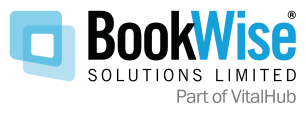Blog

WHY CHOOSE BOOKWISE ONCOLOGY? A CLIENT CASE STUDY, PART 1
The Client
One of our clients, a Haematology Day Case Unit, has 16 treatment chairs, an apheresis room (3 treatment chairs), a 2 bedded area and a single room for procedures. They provide a service for non-malignant and malignant haematology. This consists of a range of care including intravenous and subcutaneous drug administration, chemotherapy (including intrathecal chemotherapy), clinical procedures (bone marrow biopsies, central venous access device insertion, removal and skin/organ biopsies), blood product administration, apheresis service (red cell exchange, photophoresis, stem cell collections, plasma exchange) and a triage and self-referral service.
The Background
Within haematology their incidence rates continue to rise and mortality is declining through a significant improvement in treatment efficacy. This is reflected in the fact that local service provision and day case activity has continued to grow at approximately 5% per annum, with current bookings ranging from 60 to 100 patients per day. Activity has grown within the last year from 18,484 appointments to 21,735. The increasing demands on the service have led to increasing patient waiting times and delays, increase in clinical risks, increased stress and burden on the nursing and administration team.
The previous electronic booking system did not take nursing staff numbers into account and was scheduling appointments based on capacity available only. Consequently, multiple patients could be allocated the same appointment time that exceeded the number of staff available. This lead to significant patient delays, causing anxiety and distress. It also lead to staff dissatisfaction through poor patient experience, complaints, low job satisfaction, being overwhelmed by increasing numbers of patients in waiting area and working beyond contracted hours to complete treatments and care.
Staff Well-being
The Unit’s haematology nurses care for patients that are often affected by incurable chronic cancers, such as leukaemia, lymphoma and multiple myeloma, which reduce their quality of life and require debilitating and life-threatening therapies such as stem cell transplant. The daily exposure to suffering and loss can lead haematology nurses to experience strong emotions such as feelings of inadequacy, grief, anger, disillusionment and frustration, sense of failure, desire to avoid patients and detachment to work. Workload that is excessive can also cause stress and burnout for nurses which has a negative personal effect and can also affect their relationships and emotional well-being. At an organisational level, burnout syndrome seems to be associated with high absence rates, staff turnover and reduced productivity all of which reduce the efficiency of the health care system, reducing the quality of care given to the patients causing dissatisfaction among patients.
Their department has minimal staff turnover with good rates of retention despite the increasing demands placed on their nursing team, it could therefore be presumed this is a reflection of the nurse’s commitment to the patients, department and service. This is also reflected in the vast amount of positive patient feedback they received. However, this does not mean it is acceptable to expect staff to work in stressful conditions. There is a national shortage of nurses and it is important to identify the source of stress in any job and try to make the appropriate changes.
The Solution
The implementation of a new scheduling system enabled the department to schedule the daily workload according to nursing staff available, reducing the burden and workload demands placed on the nursing team. This reduced work related stress and promoted greater job satisfaction and enhanced personal wellbeing. It was also effective in reducing the need for working extra hours which was costly in terms of wages paid and costly in terms of nurse burn out due to working increased hours and challenges to take time in lieu.
Patient Safety – Nurse/Patient Ratio
Concerns about the safety of staffing levels are widespread among the nursing profession. The Francis, Berwick and Keogh reports have clearly linked nurse staffing levels to patient safety and quality of care. There is widespread evidence of patient safety being affected by staffing. There are no national or local guidelines on safe staffing levels for haematology day case units and no patient dependency tools. Consequently, the calculation of staffing levels and nurse/patient ration is very subjective.
BookWise Oncology takes into account ‘hands-on nursing time’ required for interventions to schedule care and treatments according to nursing time available. Scheduling patients effectively based on capacity and nursing time has reduced patient waiting times and enhanced the quality of the patient experience. The system has also enabled more accurate planning of treatment times, use of hospital transport, patients arranging collection times and reduced the amount of time they are in the department. This approach has enhanced patient care through improved staff morale and reduction of stress and pressure through appropriate time being allocated to complete treatments and care safely.
In part 2 next month we will look at the process the client followed to implement BookWise Oncology and the results they obtained.
Published 07 Aug 2018
Delete Confirmation

© BookWise Solutions Limited 2025 All rights reserved | Our Privacy Policy
Redirect to Australia Site
You are located in the Australia. Would you like to be redirected to our Australia site?